1,577 days, 2,409 entries ...
Newsticker, link list, time machine: HOLO.mg/stream logs emerging trajectories in art, science, technology, and culture––every day
The 60th International Venice Biennale opens in Italy with its usual dynamic roster of global talent. Excitingly, Archie Moore populates Australia’s pavilion with kith and kin (2024, image), a dizzying “holographic map of relations” charting 2,400 generations of the artist’s Indigenous ancestry and its many ties to the living world. Other pavilions of note include Hungary (Márton Nemes), Iceland (Hildigunnur Birgisdóttir), and Lithuania (Pakui Hardware & Marija Teresė Rožanskaitė).
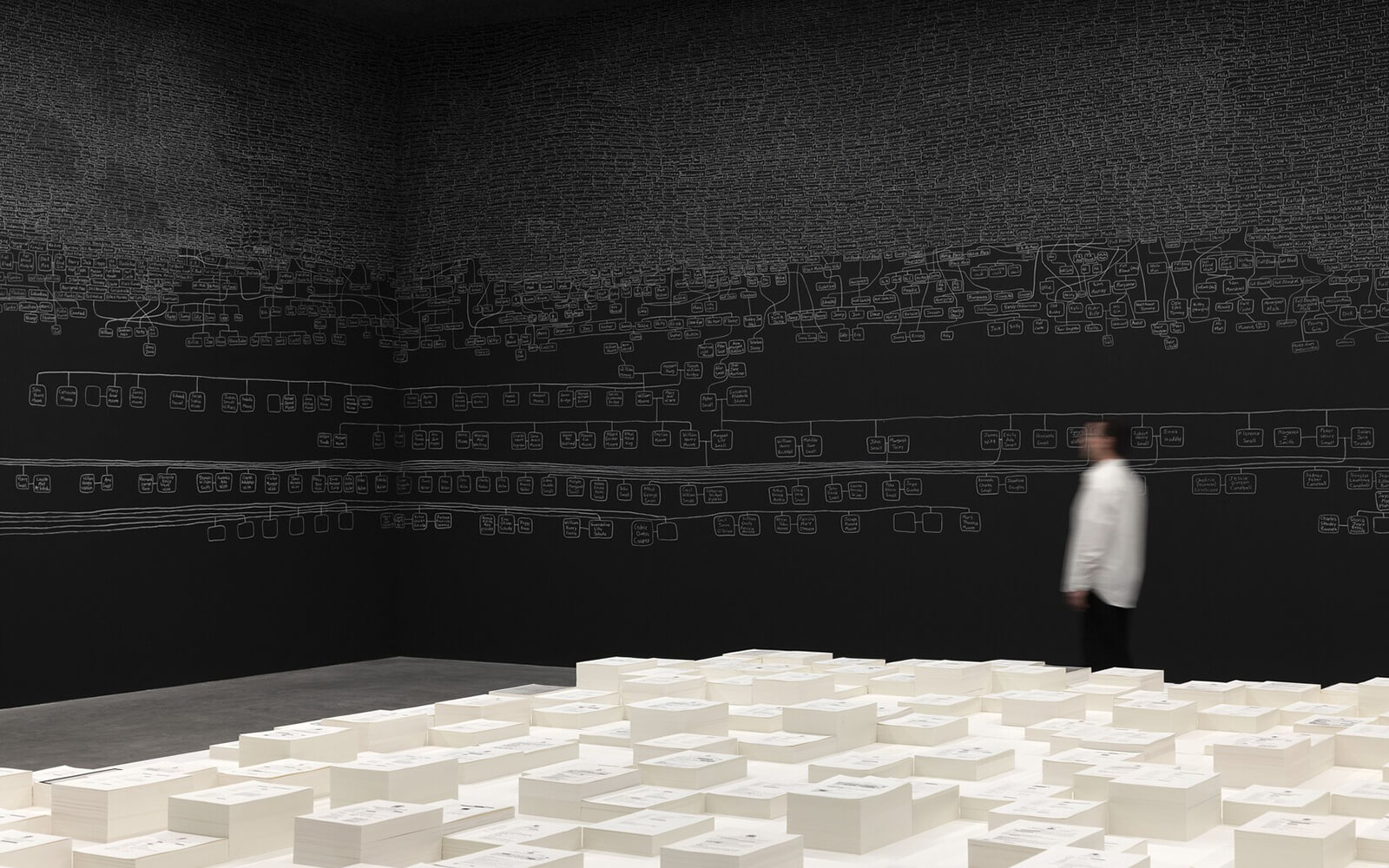
Presenting a new body of sculptures and murals, Auriea Harvey’s “The Unanswered Question” opens at bitforms in New York City. Artfully staged, the Rome-based artist juxtaposes totemic sculptural forms with collages brimming with art historical fragments under contrast-amplifying yellow light. In The Sacrifice (2024, image right), for example, one of Harvey’s figurines is pastiched into chunks of 3D-scanned wall frescoes—“not as simulacrum, but as a suspension of disbelief.”
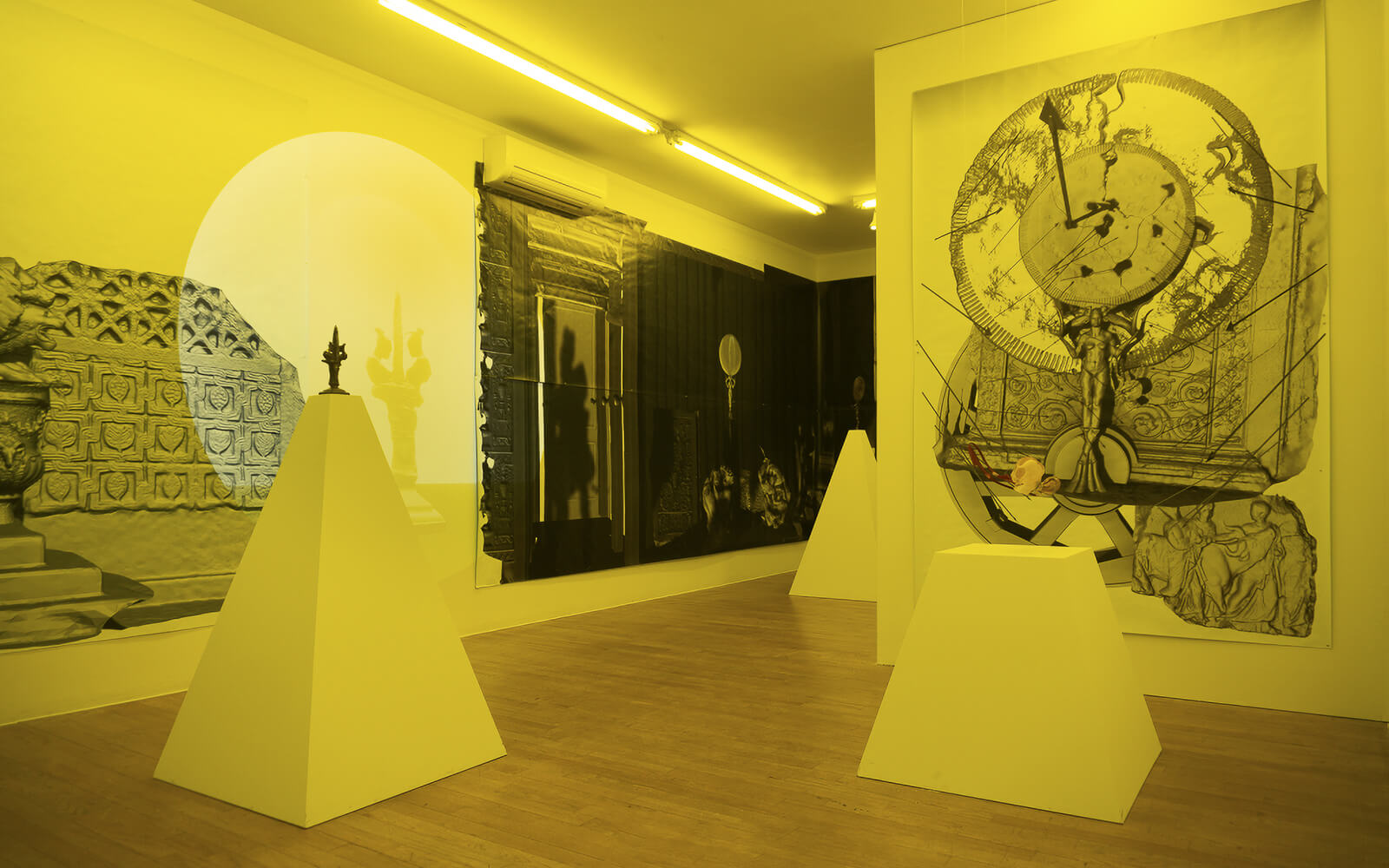
Dani Ploeger’s solo exhibition “Destructive Circuits” opens at V2_, Rotterdam, surveying works from his long-running research into the appropriation of everyday technology for homemade weaponry. According to the UN, so-called Improvised Explosive Devices (IEDs) kill thousands every year and profoundly impact security. Ploeger illuminates IED construction, their history, and links to globalized techno-consumerism and media politics with the display of trigger systems, timer devices, a sci-fi short, and an interactive sculpture that ‘blows up.’
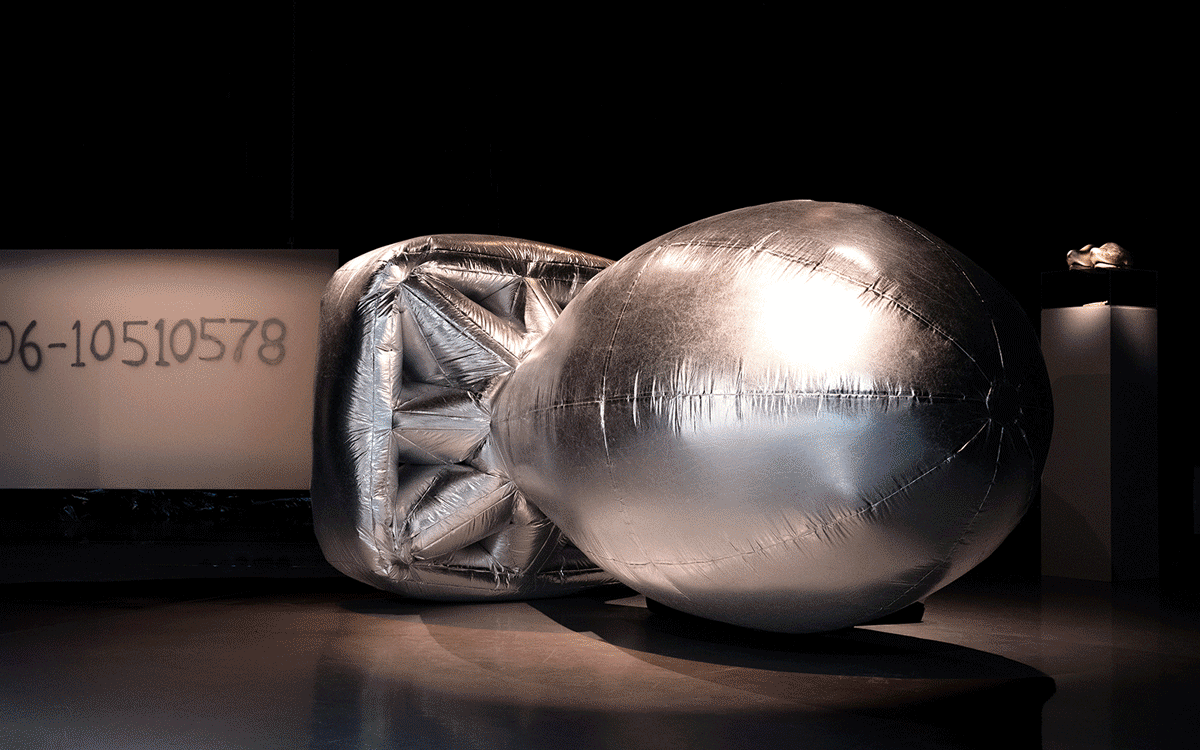
“I hate this project. The idea that Jeff Koons may be the first point of contact when we encounter extraterrestrials—when they discover his crate left on the Moon—what a statement by humanity.”
Tomás Saraceno’s solo exhibition “Live(s) on Air” opens at Tanya Bonakdar Gallery in Los Angeles, showcasing, among other works, new cloud and foam sculptures that manifest as clusters of iridescent geometries suspended in mid-air. Juxtapozed with a series of infrared photography that suggests a new era of climate-neutral aerosolar flight, the Argentinian artist’s floating colour fractals “make visible the spectral hues and synaesthetic vectors that shape the cosmic web,” inviting meditation on “forms of life and eco-social interdependence.”
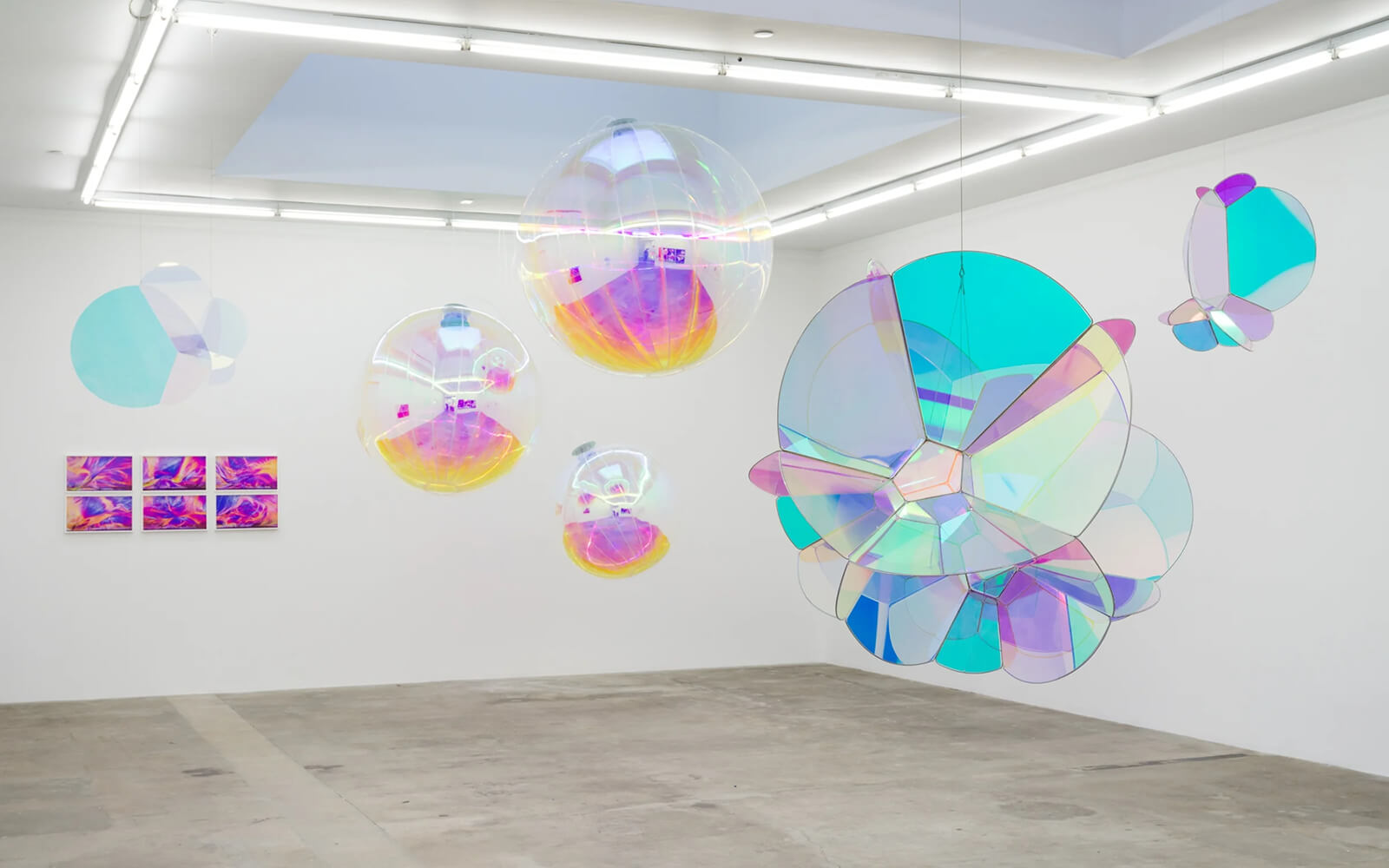
The Institute of Contemporary Art San Diego (ICA) opens “Pınar Yoldaş: Synaptic Sculpture,” the Turkish-American artist and UC San Diego Professor’s first U.S. solo museum exhibition. Expanding her oevre of speculative biologies, Yoldaş presents several new works including an algae bioreactor brewing plastic alternatives that illuminate the technocene. “If we ask ourselves what drives technological progress,” Yoldaş explains, “we can see that it is as much our collective desires as it is our collective needs.”
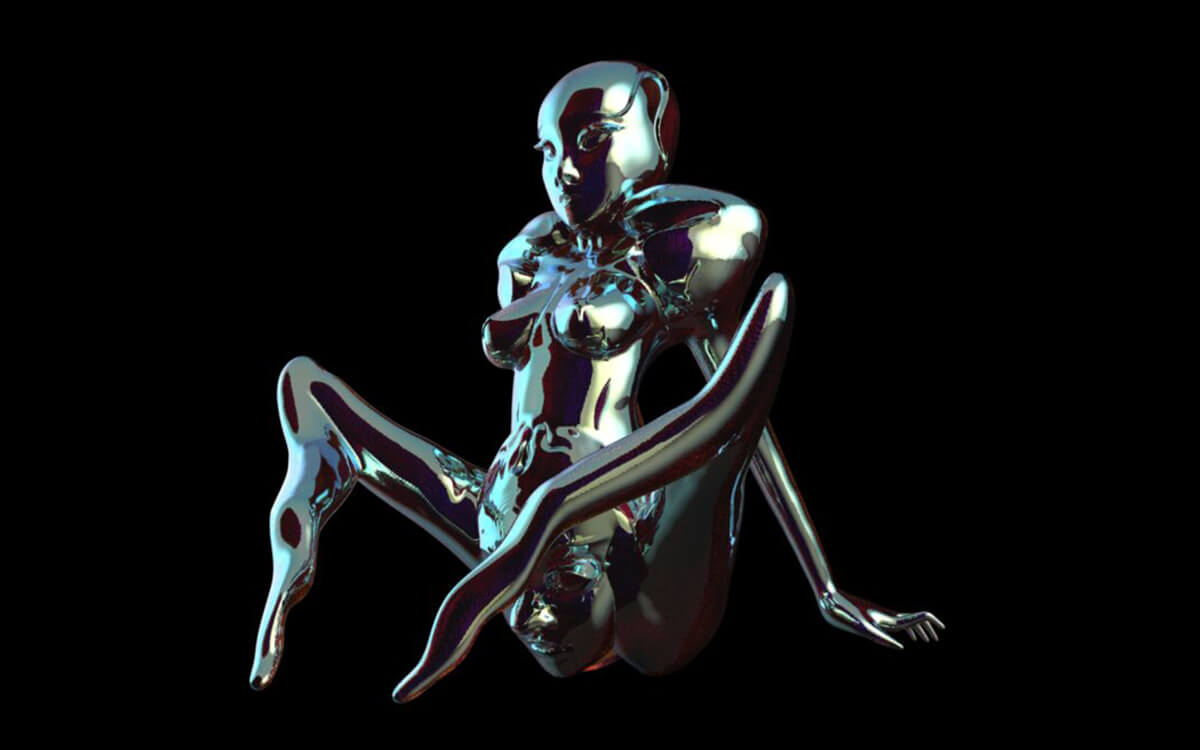
“I wasn’t creating work that was about technology or about the internet or about computers, but about the humans using the computers, myself using computers, my body in front of the computer.”
Carola Bonfili’s solo exhibition “Second Order Reality” opens at Aksioma, Ljubljana, exploring states of magical thinking and embodied otherness in virtual worlds. Drawing on the writings of Gustave Flaubert and H.G. Wells as well as videogame metaphors, the Italian artist tells the story of primate protagonist M’ling, The Stone Monkey (2022), across CGI video, an immersive VR experience (entitled Level 1, Illusions That We Should Have, But Don’t), and concrete sculptures.
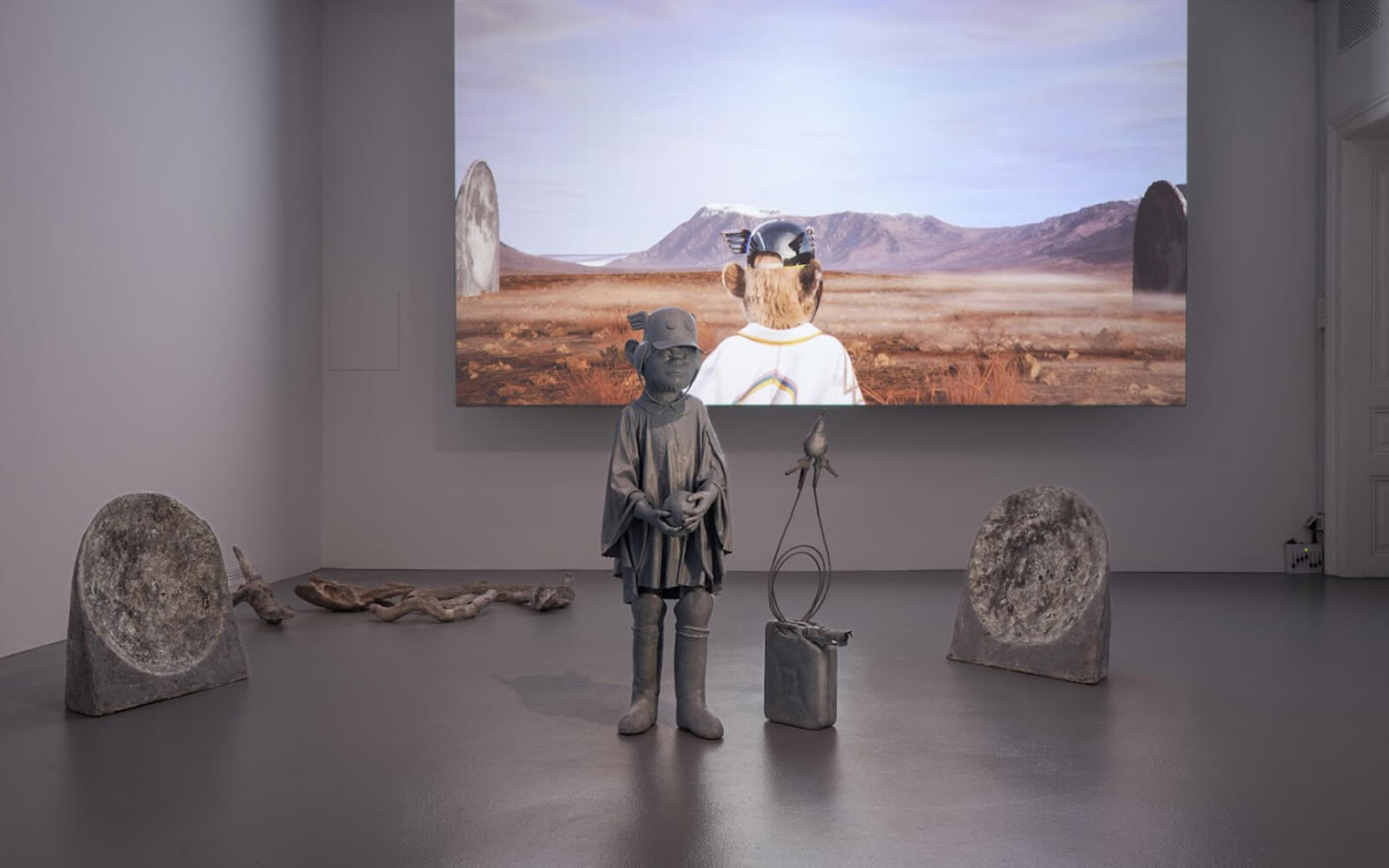
Dredging up grotesque imaginaries, Tishan Hsu’s “recent works 2023” opens at Secession in Vienna. Taking centre stage at the artist-run space, the American artist presents tablet-skin-screen (2023, image), an undulating moiré pattern-adorned sculpture that evokes both flesh and (video) feedback. Complementing the unnatural geometry, surrounding morphing videos and prints depict “the interpenetration of physical bodies with virtual digital forms.”
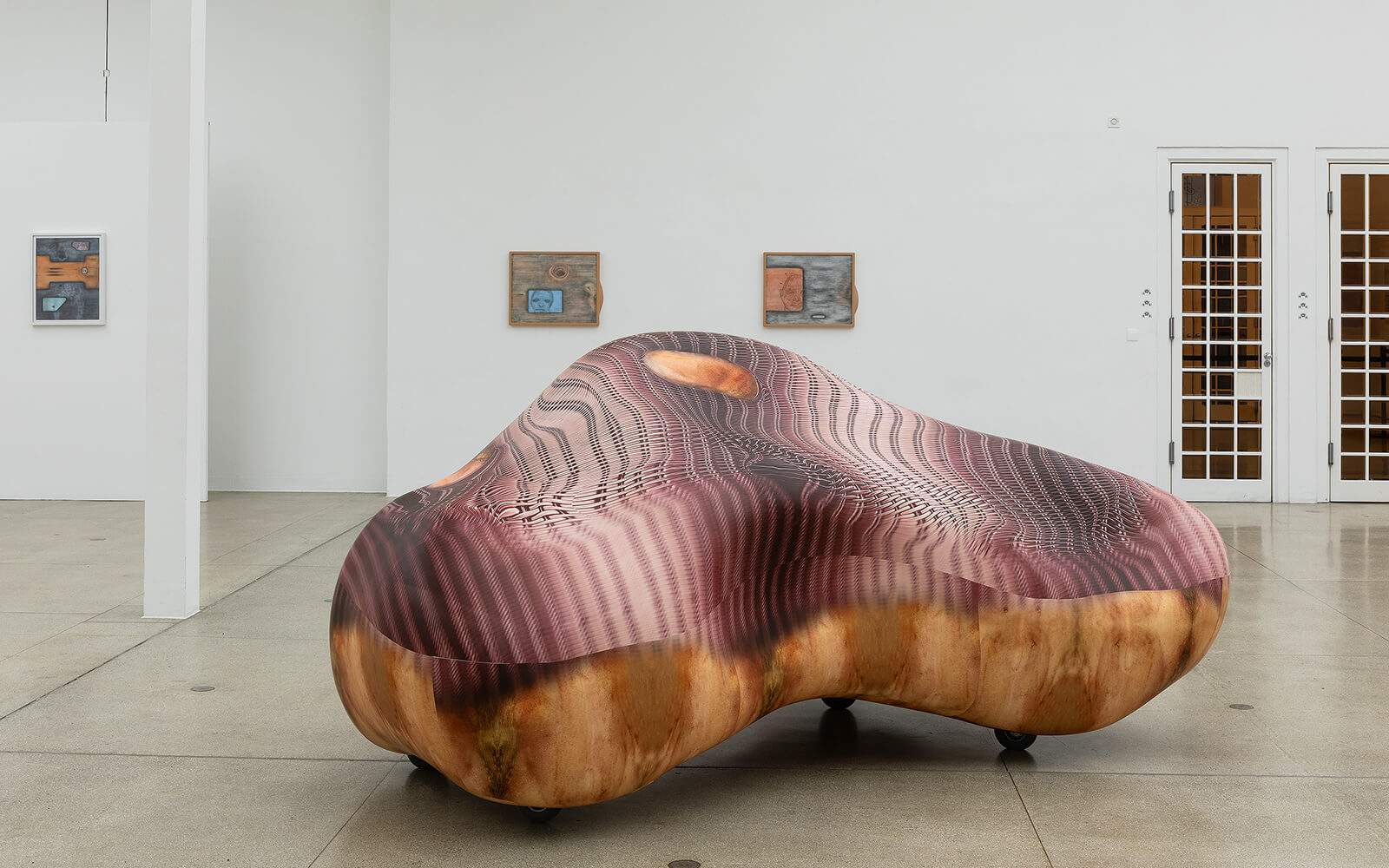
“Slapping Pythagoras,” Angela Bulloch’s first solo exhibition in Korea, opens at Esther Schipper, Seoul. Premiering new works alongside iconic historical pieces (e.g. from the Drawing Machine series), the show manifests Bulloch’s interest in “classical geometry, mathematics, and system theory.” Abacus Tablet (2023), for example, is a new series of glass sculptures that translates the motif of the ancient analogue computing device into an illuminated grid of 25 moveable cubes, waiting for input.
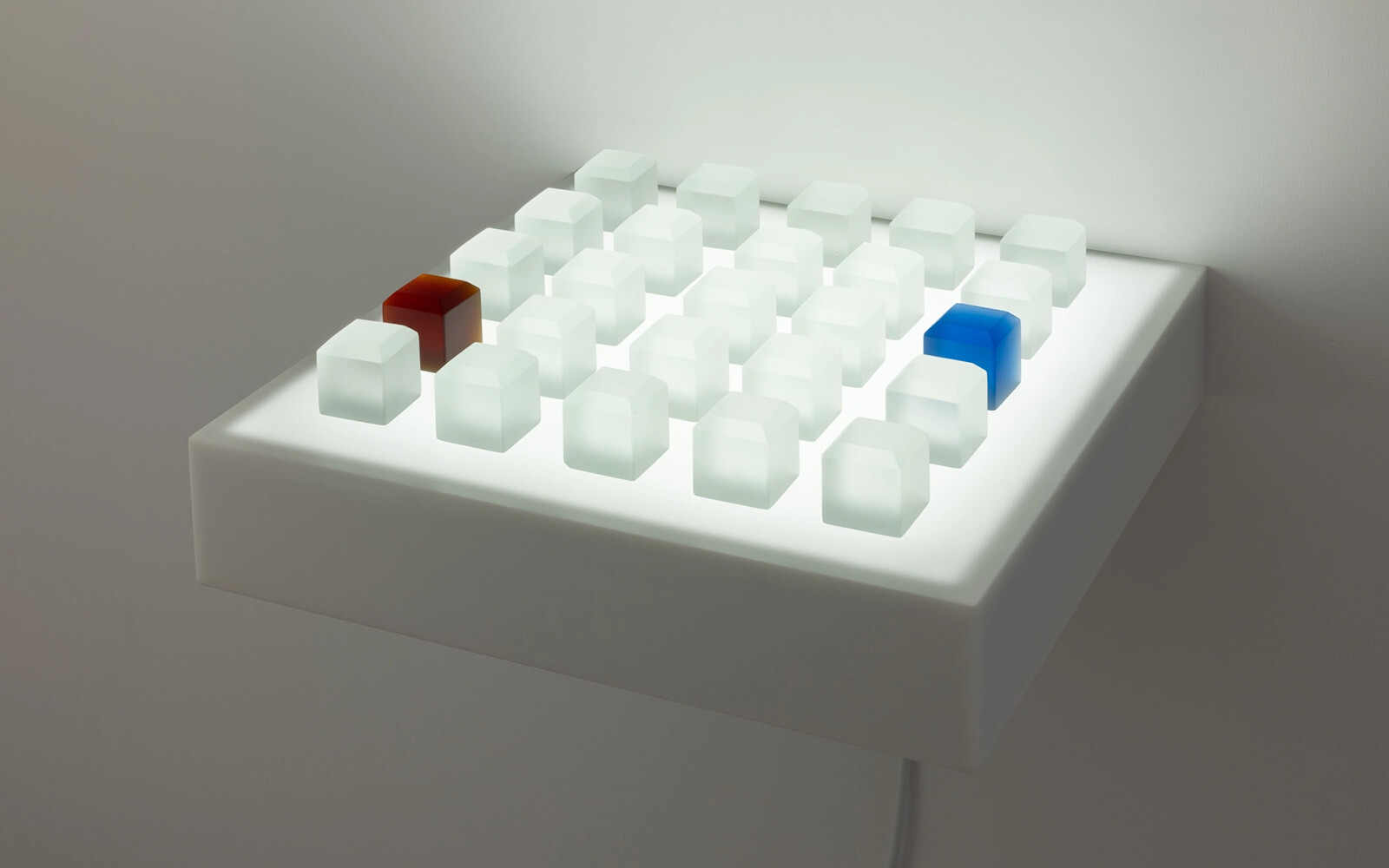
“I would like the body to be an open system, one that is exposed and fragile.”
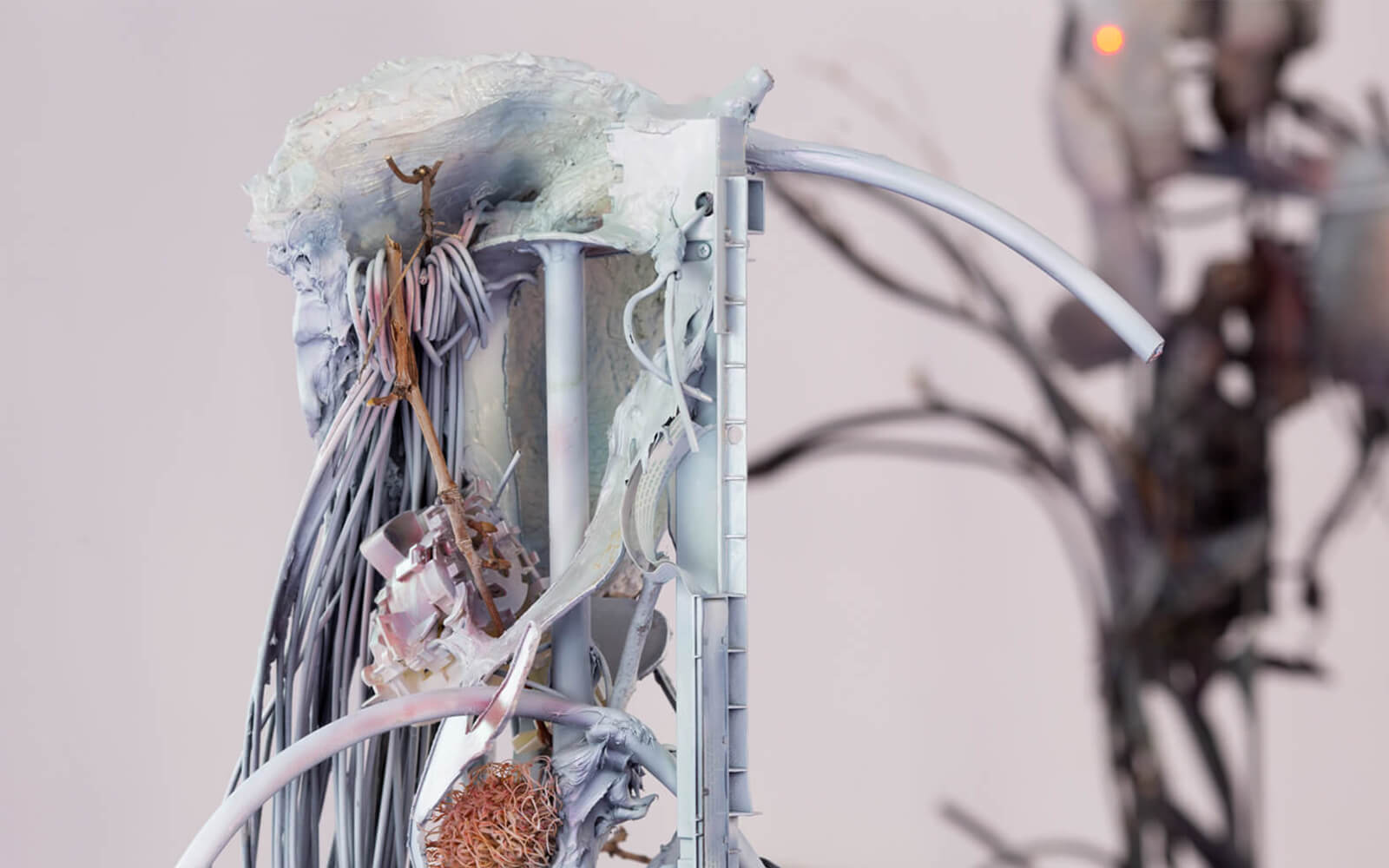
“Plastic World,” a show exploring the politics and aesthetics of the ubiquitous polymer-based material, opens at Schirn Kunsthalle Frankfurt. Its 50 contributors include contemporary artists focused on ecological critique (Monira Al Qadiri, Pınar Yoldaş) as well as 20th century conceptualists (Christo & Jeanne Claude, Hans Hollein); from the latter camp, kinetic sculptor Otto Piene’s Anemones: An Air Aquarium (1976, image), has been reproduced, in all its inflatable glory.
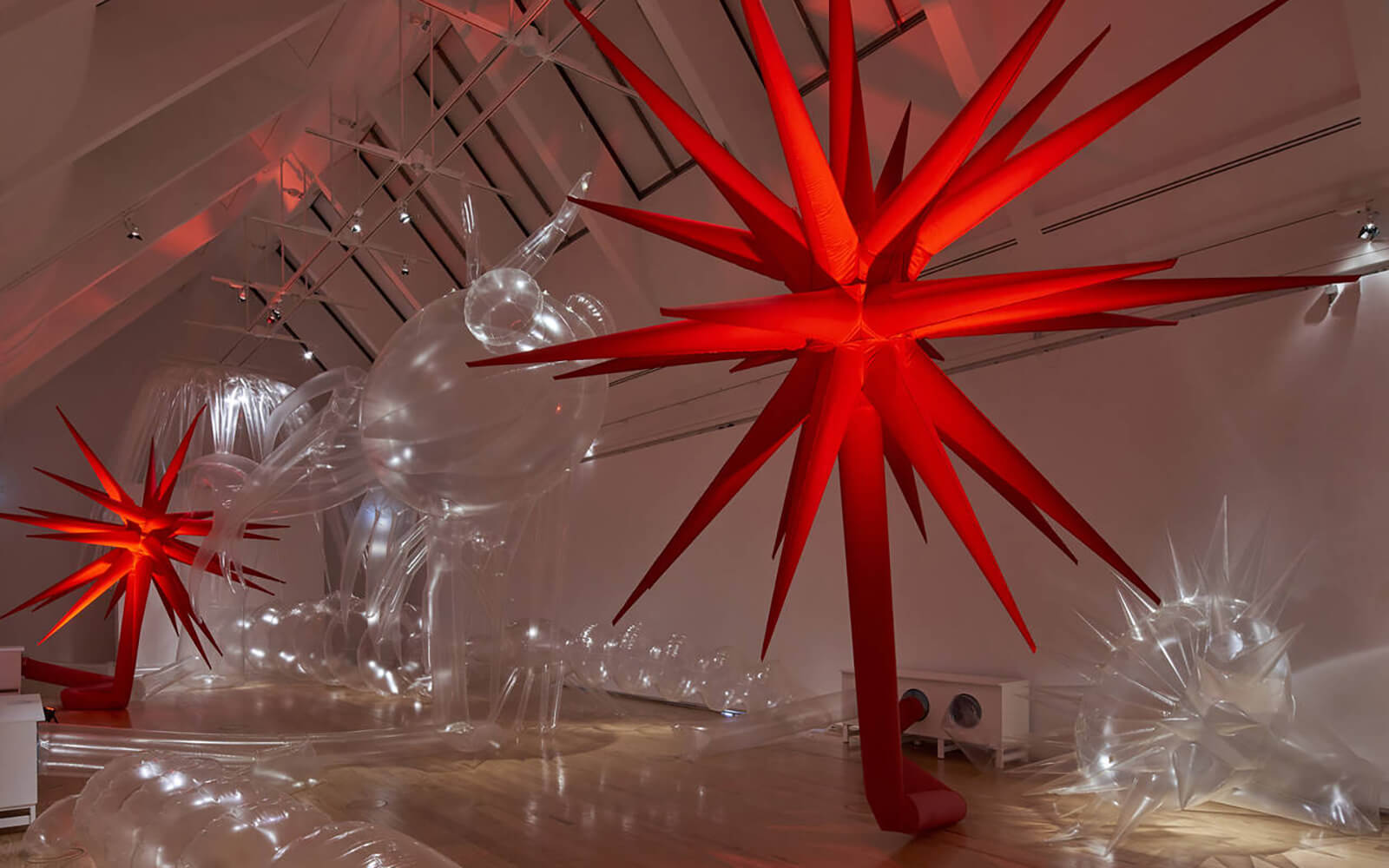
“Metaverse Landscapes” and “Uncomputables,” a pair of solo shows by New Zealander Simon Denny and Polish artist Agnieszka Kurant, open at Kunstverein Hannover (DE). The former features Denny drawing on landscape and abstract painting tropes to map the immaterial territory of crypto platforms in oil paintings (image: Metaverse Landscape 7: Somnium Space Small #138, 2023), while the latter showcases Kurant’s “quasi-alchemical transmutations” in sculpture (image: Post-Fordite 2021-22) and code.
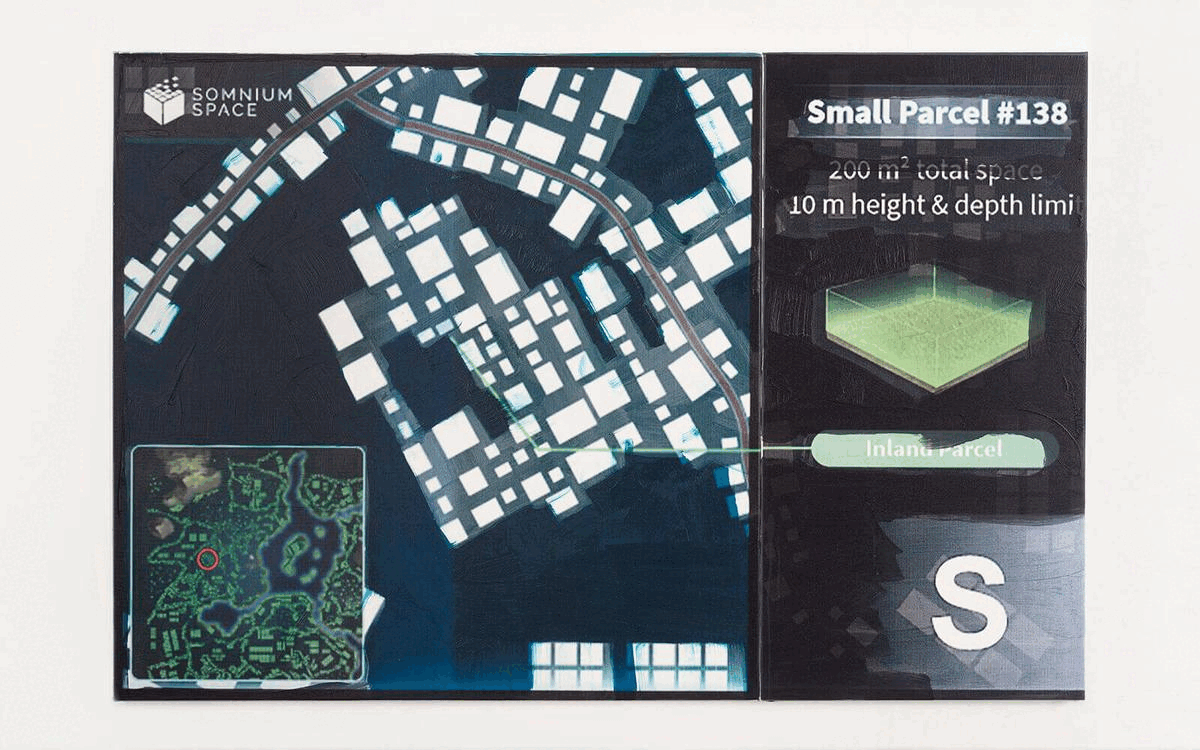
An exhibition for the post-truth era, Trevor Paglen’s “You’ve Just Been Fucked by PSYOPS” opens at Pace New York. In it, the American artist charts the “enduring effects of military and CIA influence operations on American culture” through several new works. These include an unknown orbital object photo series, and Because Physical Wounds Heal… (2022, image right), a mixed media—steel, bullets, resin—sculpture that mythologizes the iconography, sloganeering, and abject horror of U.S. psychological warfare.
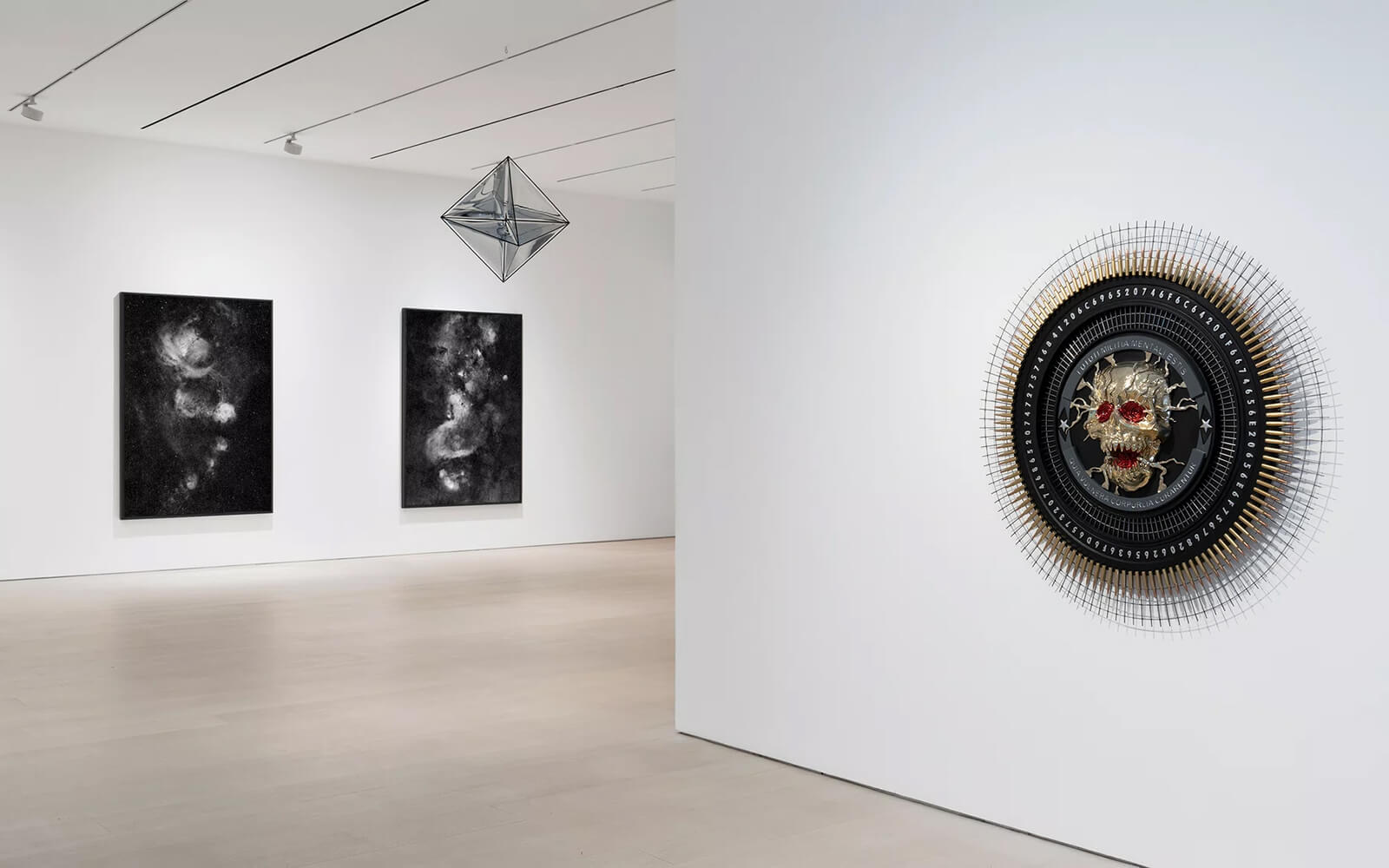
Old Tree, a sculptural intervention into New York City’s urban fabric by Pamela Rosenkranz, takes root on the High Line. By constructing the primordial symbol of life and knowledge out of man-made materials (the 7.5 m sculpture is a steel armature layered with foam and resin), and coating in a hot pink and red paint job that starkly contrasts the surrounding monochromatic skyscrapers, the Swiss artist acknowledges both a romanticized ecology and a world “in which the synthetic has become nature.”
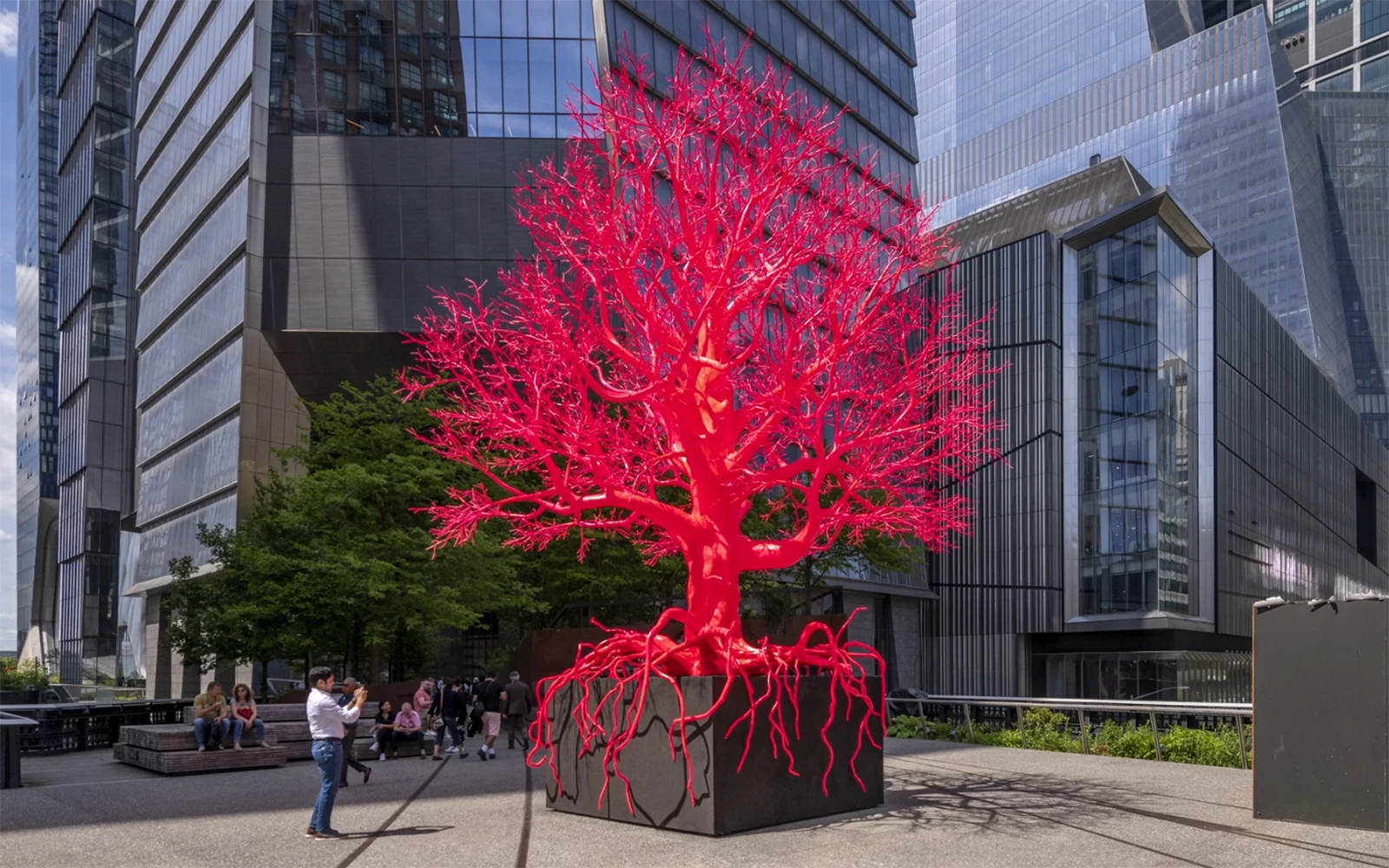
“Mutant Passages,” a new body of work by Kuwaiti artist Monira Al Qadiri, opens at Kunsthaus Bregenz (AT). Articulating her central interest in oil sculpturally, the works include petrochemical molecular structures inflatables (image: BENZENE FLOAT, 2023), gastropod seashells that tell a story of “bizarre changes and contaminations” when listened to, and a white room filled with dark glass forms (inspired by the oil-drenched animal carcasses that washed ashore during the Gulf War).
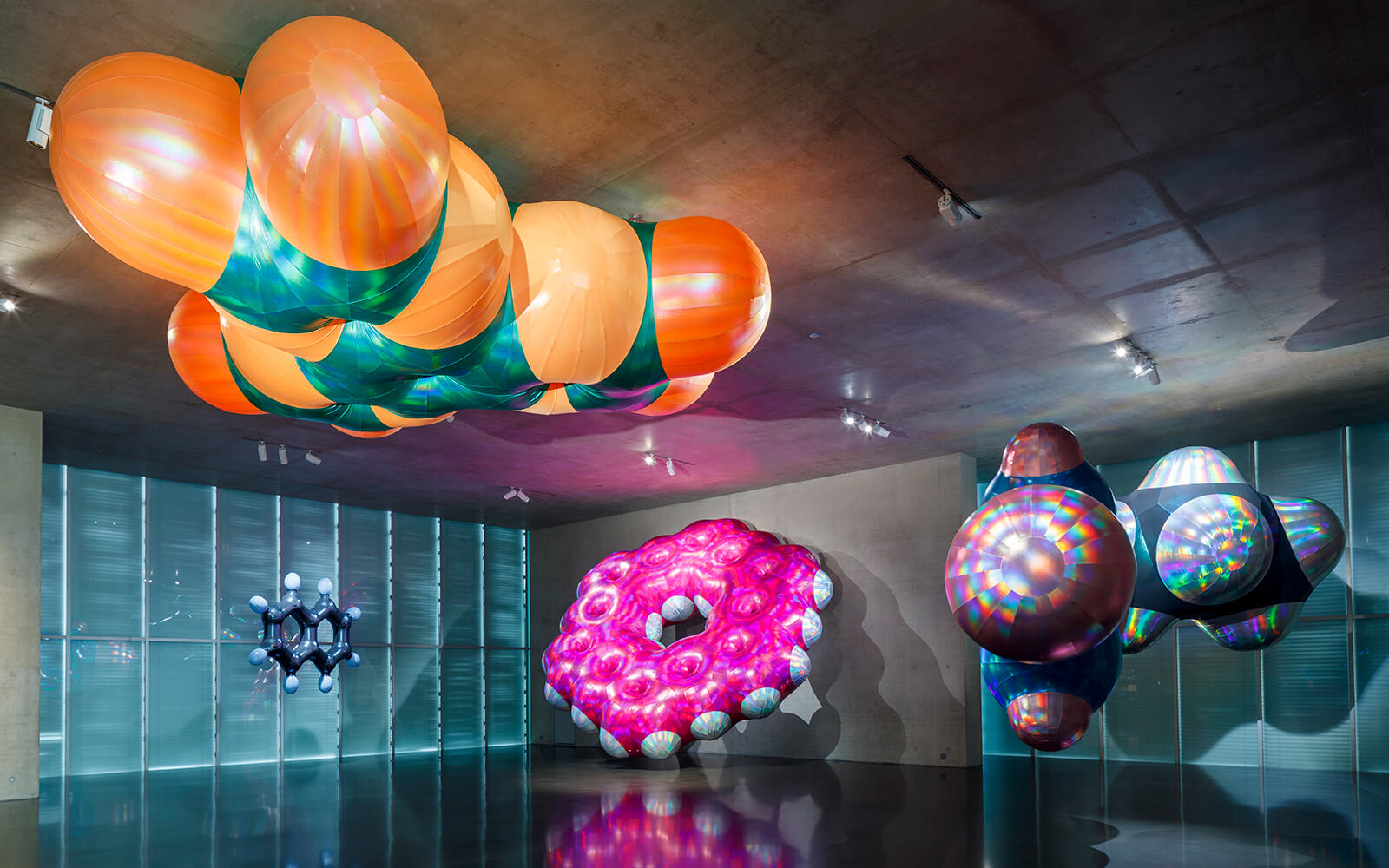
“Grand Bal,” a retrospective of works by Ann Veronica Janssens, opens at Milan’s Pirelli HangarBicocca. Presenting works from the last three decades, the British artist offers a “visual and sonic choreography” of glass, fog, light, and video for visitors to traverse. Featured works include Golden Section (2009), suspended mirror foil and wrinkled PVC made with Belgian artist Michel François (image), and Blue Glass Roll 405 (2019), a series of cast glass sculptural forms (image foreground).
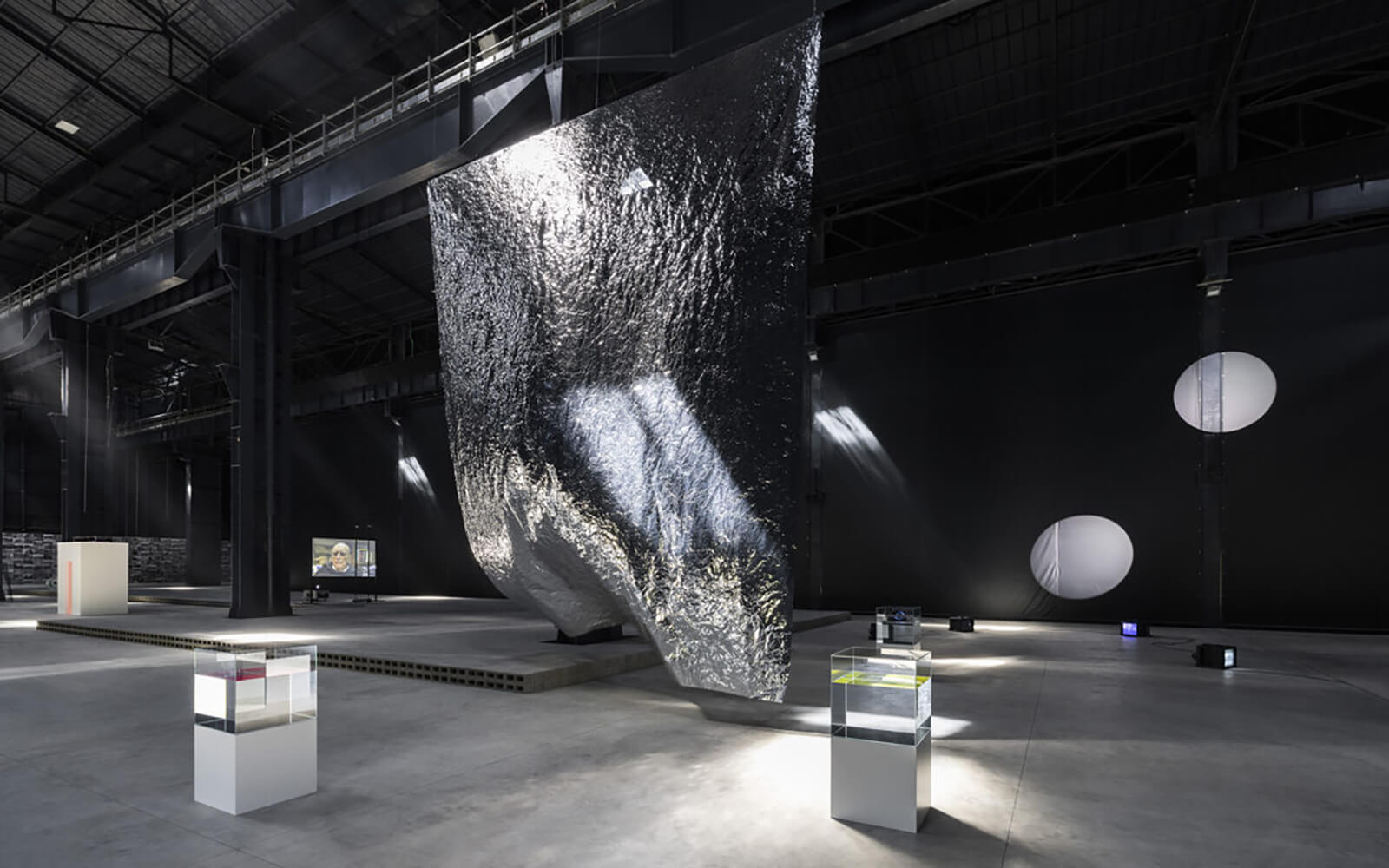
Basel’s House of Electronic Arts (HEK) premieres new works by Pe Lang, Johanna Bruckner, and Jennifer Merlyn Scherler—three Swiss media artists and winners of the 2022 Pax Art Awards—in parallel solo exhibitions. Veteran Lang translated a scene from his forthcoming sci-fi novel into a kinetic light installation, whereas emerging talents Bruckner and Scherler authored CGI video and sculptural works that explore techno-bodies (image: Body Obfuscations, 2023) and climate anxiety.
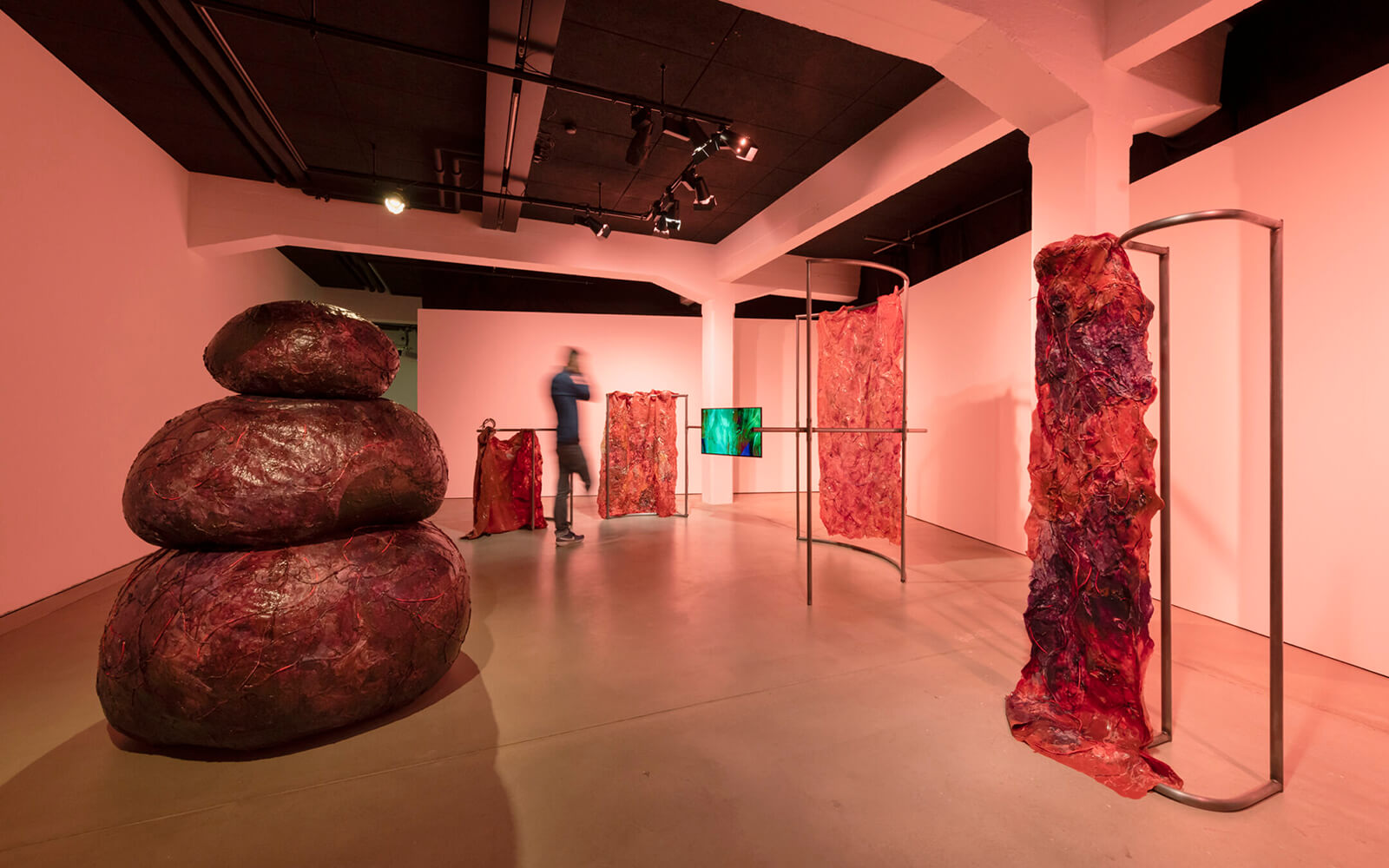
Berlin-based media artist Aram Bartholl plants a towering heart emoji, or Triangle of Sadness (2023), outside of Stadtgalerie Kiel, Germany, as part of the gallery’s “Tourismus. Let’s do it all” group exhibition. The latest in Bartholl’s series of supersized Internet iconography (Map, 2006-19, This is Fine, 2022) deals with the performative aspects of travel in age of platform capitalism and calls attention to the social cost of algorithmically driven content production and consumption cycles.
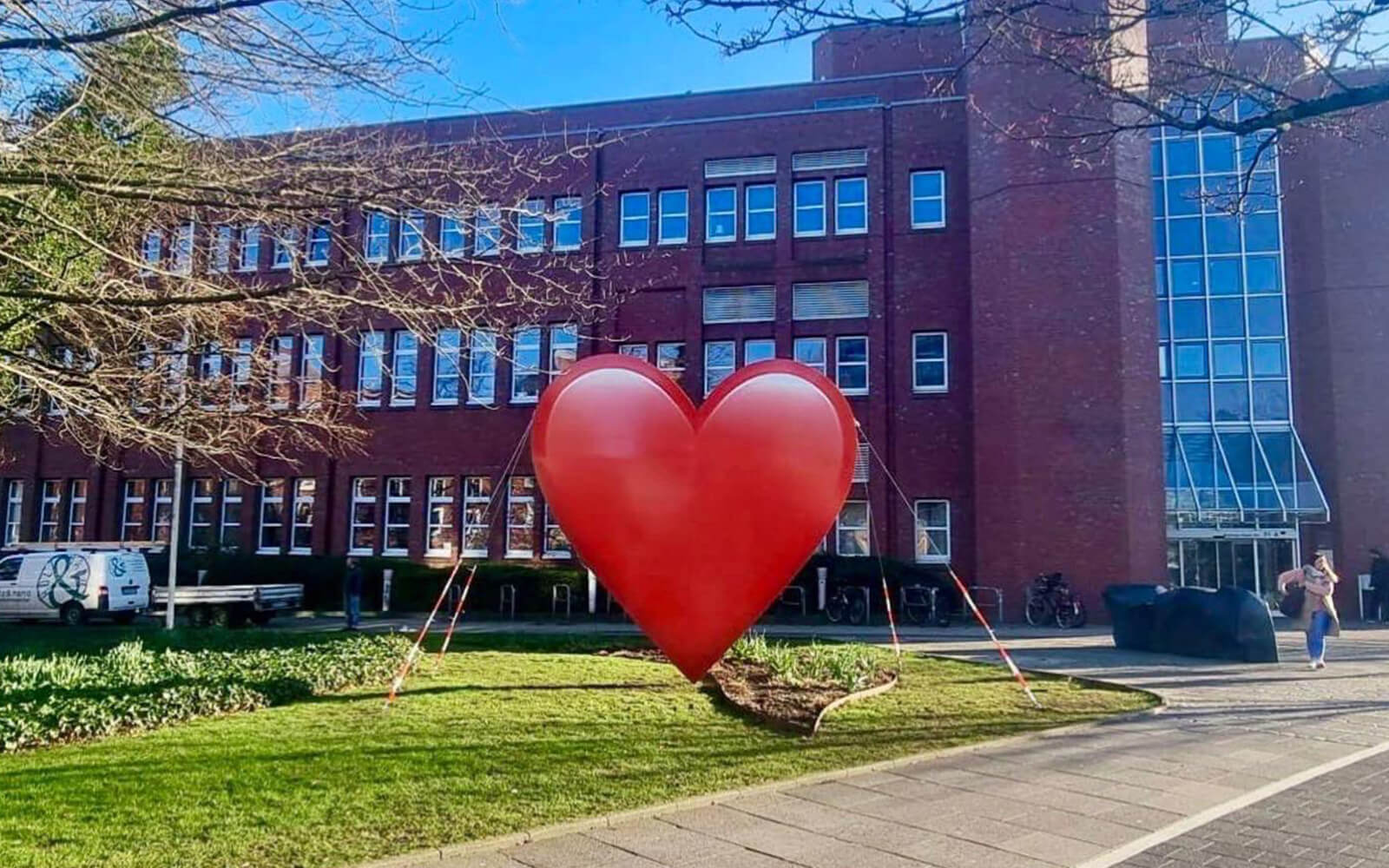
Daily discoveries at the nexus of art, science, technology, and culture: Get full access by becoming a HOLO Reader!
- Perspective: research, long-form analysis, and critical commentary
- Encounters: in-depth artist profiles and studio visits of pioneers and key innovators
- Stream: a timeline and news archive with 1,200+ entries and counting
- Edition: HOLO’s annual collector’s edition that captures the calendar year in print
